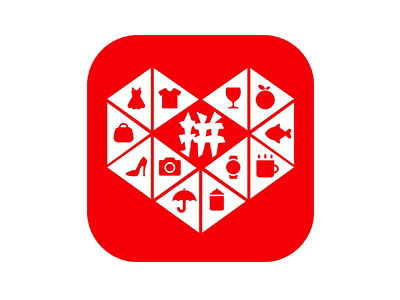拼多多(PDD.US)2025年第二季度业绩电话会
文章语言:
简
繁
EN
Share
Minutes
原文
会议摘要
PDD Holding Company is stepping up support for agricultural production areas, industrial belts, and branded merchants through a billion-dollar support plan to promote high-quality development, reduce merchant costs, increase efficiency, and promote consumption upgrades. The company is facing global trade changes and industry competition by increasing investment, sacrificing short-term profits, deepening support for merchants, and promoting ecological sustainability. Specific measures include waiving service fees, providing logistics support, emergency funding assistance to help merchants overcome challenges and achieve sustainable growth. Despite slowing revenue growth and declining operating profits, the company believes these are necessary sacrifices for long-term ecological health investments. In the future, the company will optimize supply chain, service, and compliance capabilities to meet global consumer demands and achieve sustainable growth.
会议速览
Pinduoduo company held the second quarter performance conference, provided a detailed interpretation of financial data, outlooked future strategic direction, answered investors' questions, emphasized the company's market position and development potential.
The meeting reviewed the challenges and opportunities of e-commerce platforms in the first half of 2025, focusing on the impact of the billion-dollar support plan on the merchant ecosystem, including cost reduction, logistics support, and the introduction of innovative solutions. The plan effectively reduces merchant costs, boosts brand upgrades and market expansion, and enhances user stickiness through consumer feedback projects. In the future, the platform will continue to invest in high-quality growth and consumer experience to achieve long-term value creation.
To address new challenges, platform enterprises are increasing investment and implementing a billion-yuan support strategy to promote businesses to reduce commissions and increase efficiency, promote industrial upgrading and diversified development, especially in agricultural and specialty product areas, through customized support to achieve sustainable development, boost farmers' income, and enhance the long-term value of the platform ecosystem.
E-commerce platforms visit industrial belts to understand the needs of businesses, utilize digital technology and innovative models to support industrial upgrading and brand transformation, stimulate consumer demand, achieve win-win situations among multiple parties, and work towards building a more inclusive and open industry ecosystem.
In the second quarter, total revenue reached 10.4 billion RMB, a year-on-year increase of 7%, mainly benefiting from the growth in online marketing and transaction service revenue. Despite rising costs and operating expenses, the company remains focused on creating long-term value and investing in ecosystem support. Non-GAAP net profit decreased by 4% year-on-year, with total cash and equivalents reaching 38.71 billion RMB.
During this Q&A session, the organizers announced that two representatives will answer analysts' questions in Chinese, while also providing translation services for easier understanding. Participants are encouraged to ask up to two questions during the meeting, and questions will be asked in an orderly manner under the guidance of the host to ensure that each participant has the opportunity to join the discussion.
The dialogue discussed the response strategies of e-commerce platforms facing intensified industry competition, including increasing investment to support small and medium-sized merchants, as well as how to promote the steady growth of global business through the improvement of supply chain and service capabilities, emphasizing the concept of long-term high-quality development.
Discussed the impact of the billion-dollar support plan on business operations and financial performance, as well as expected changes in long-term realization rates and expense allocations; at the same time, explored the company's future planning and development direction in the background of competitors exiting the market in the Duoduo Buy Vegetables business.
Discussed the importance of fresh e-commerce business and the necessity of long-term investment, emphasizing the value of building an efficient supply chain and solving the last-mile delivery challenges, as well as increasing subsidies and traffic bias in remote areas to enhance product supply, expand the inclusive consumption circle, create job opportunities, and promote community economic development.
Discussed the performance decline in the previous quarter due to mismatches in investment and return cycles, the second quarter shows signs of stabilization in expense and profit ratios, but the company is still increasing long-term investments. Management emphasizes investing in a healthy business ecosystem, sacrificing some short-term profits to support businesses, optimistic about the potential of the Chinese consumption market in the long term, supporting businesses and consumers through promotional activities and subsidy projects to create a healthier platform ecosystem.
要点回答
Q:What are the key features of the 'hundred billion support programs' launched by PDD holdings?
A:The 'hundred billion support programs' launched by PDD holdings include substantial investments in the merchants ecosystem to support new business models and growth opportunities. This program has been reflected in the company's Q2 financial performance, with investments in various initiatives such as fee reductions for merchants, significant savings, logistics support, and expanded consumer campaigns.
Q:How has the 'hundred billion support program' impacted the merchants and the platform's ecosystem?
A:The 'hundred billion support program' has brought substantial savings for merchants, allowing them to innovate and offer a wider selection of high-quality products. It has also supported the transition of manufacturers from white label products to branded offerings and has helped farmers and growers improve margins by improving quality control. Additionally, the program has contributed to increasing order numbers from regions and delivering innovative solutions to help merchants grow their business while reducing costs and commissions.
Q:What are some examples of how established brands and smaller changes are gaining new momentum in the PDD holdings ecosystem?
A:Established consumer brands are reinventing themselves by leveraging consumer insights to shorten product launch cycles, lowering IND cards, and entering new market segments. Industrial belt manufacturers are transitioning from white label products to branded offerings, breaking away from commoditized competition. With the 'duo duo premium produce program', farmers and growers are achieving higher margins by improving quality control and moving into food processing. These examples demonstrate how the ecosystem is supporting various sizes of businesses to gain new momentum.
Q:What is the purpose of the 'smart agricultural competition' and what are its latest developments?
A:The 'smart agricultural competition' is an initiative by PDD Holdings aimed at investing in agriculture through technology. The fifth iteration of the competition saw 46 global teams compete in July, showcasing cutting-edge technology in AI farming, hydroponics, and other efficient systems. The competition serves as a key platform for agricultural technology research and application. Participants will later test the commercial applications of their research findings in the upcoming events.
Q:What is PDD holdings' stance on short-term results versus long-term value creation?
A:PDD holdings is committed to long-term value creation over short-term financial results. The company's team will prioritize high-quality growth by creating long-term opportunities for merchants and investing in consumer experience. Although profitability may fluctuate, the company believes that the current quarter's results may not represent future earnings trends.
Q:How does Pinduoduo promote the high-quality development of agriculture and manufacturing industries through a series of measures and meet the diverse needs of consumers?
A:In the reform of the supply side, Pinduoduo has comprehensively expanded support for small and medium-sized merchants, emerging merchants, and brand merchants, ensuring that all types of merchants can enjoy the benefits brought by platform policies. By deeply entering agricultural areas and industrial belts, implementing multi-level and all-round support strategies, helping these areas achieve high-quality development to meet the different needs of consumers.
Q:In the past quarter, what specific areas did Pinduoduo's "Billion Support Plan" invest in, and what achievements were made?
A:In the past quarter, Pinduoduo's billion-dollar support plan has invested a large amount of resources in multiple initiatives including the billion-dollar fee reduction plan, logistics support plan, and new quality emergency support plan. These efforts have significantly reduced service costs for millions of merchants, saving tens of millions of RMB annually, and creating more momentum and space for industrial upgrading. The logistics support plan connects both supply and demand, driving rapid growth in orders from remote areas and greatly enriching the lives of consumers in these regions. In addition, the platform has also provided customized support for businesses of different sizes and types, such as agricultural specialty areas, by enriching product offerings and addressing seasonal supply shortages to achieve long-term development.
Q:How does Pinduoduo's mental supply team help merchants use platform resources and technology to achieve industrial upgrading and innovation?
A:Since the second quarter, the mind supply team has delved into various industrial belts such as Yiwu small commodities, Jinjiang clothing, Foshan children's wear, Weihai fishing gear, etc., deeply understanding the needs of businesses and analyzing the development dilemmas of the industry. By using the platform's digital technology, as well as innovative methods such as black label stores and Duoduo videos, they explore and promote new ideas and models for industrial upgrading. For example, through system upgrades, they help businesses accurately select potential popular products and provide resource support, reducing trial and error costs, increasing the success rate of new product development, and thereby helping businesses successfully transition and expand their markets.
Q:How does Pinduoduo help traditional Chinese brands cope with the new changes in the consumer market and find new growth points?
A:Facing changes in the consumer market, Pinduoduo's business team collaborates deeply with traditional brands, providing comprehensive support in product planning, marketing promotion, and store operations, to help brands successfully tap into a younger and more segmented market, find new growth curves, and complete strategic transformations.
Q:What impact has Pinduoduo's investment on the supply side had on the consumption potential on the demand side?
A:Pinduoduo's various investments on the supply side have further stimulated the consumption potential on the demand side. During the 618 promotion period, the platform's overall consumption remained hot, with sales in multiple categories reaching record highs. The "hundred billion subsidy super-boost subsidy" activity saw a daily order volume of over 3.76 million orders, fully meeting the increasingly diverse needs of consumers.
Q:What are the main factors contributing to the six percent revenue growth from Q2 to Q3?
A:The six percent revenue growth from Q2 to Q3 was mainly due to an increase in fulfillment fees, bandwidth, civil costs, and payment processing fees.
Q:What were the increases in operating expenses for this quarter compared to the third quarter of the previous year?
A:Operating expenses for this quarter increased five percent to RMB thirty-two billion from RMB thirty points eight billion in the third quarter of the previous year.
Q:What percentage of total revenues did non-operating expenses constitute in this quarter and the second quarter last year?
A:The total non-operating expenses were 29 percent of total revenues this quarter, in line with the 29 percent in the second quarter last year.
Q:What was the change in sales and marketing expenses as a percentage of revenues compared to the same quarter last year?How did research and development expenses compare in this quarter versus the same quarter of the previous year?
A:Sales and marketing expenses as a percentage of revenues this quarter were 26 percent, which was in line with the same quarter last year.Research and development expenses were RMB 3 billion on a non-GAAP basis and RMB 3.6 billion on a GAAP basis, representing a year-over-year increase of 23 percent.
Q:What were the changes in operating profit and non-GAAP operating profit from the same quarter last year?What was the year-over-year change in operating profit and how does it reflect on the company's investments?
A:The operating profit for the quarter was RMB 25.8 billion, down from RMB 30.2 billion in the same quarter last year. The non-GAAP operating profit was RMB 27.7 billion versus RMB 35 billion in the same quarter last year.The year-over-year decline in operating profit reflects the company's continued investments in supporting its merchants and IT infrastructure.
Q:How did the company's net income in the second quarter compare to the same quarter last year and what does it indicate?How does the company's net cash generated from operating activities compare to the same quarter last year?
A:The net income in the second quarter was RMB 36.8 billion, down 4 percent year over year from RMB 32 billion. It benefited from e-commerce seasonality and may not represent future earnings.The net cash generated from operating activities was RMB 21.6 billion compared with RMB 43.8 billion in the same quarter last year.
Q:What were the changes in earnings per share (EPS) and non-GAAP earnings per share (EPS) from the same quarter last year?
A:The earnings per share (EPS) was RMB 22.012, and the diluted earnings per share (EPS) was RMB 21.75, compared to the same quarter last year. The non-GAAP earnings per share (EPS) was RMB 22.00, compared to RMB 23.24 in the same quarter last year.
Q:What is the expected impact of the company's focus on long-term value creation on short-term profitability?
A:The company's focus on long-term value creation may continue to weigh on short-term profitability.
Q:What is the company's cash position as of June 30th, 2025?
A:As of June 30th, 2025, the company has RMB 387.1 billion in cash, cash equivalents, and short-term investments.
Q:What is the current status of the company's on-demand beauty service business? We have noticed that some major competitors have surpassed us in certain markets. What are the company's development plans for this business in the future?
A:Thomas's problems have been confirmed, and Zhao Yazhen stated that although competitors have made some breakthroughs in certain markets, the company will continue to evaluate and adjust its business strategies. For the home beauty business, the company will adhere to the established business plan, further increase investment in line with the business plan to cope with the increasing pressure from industry competition, and maintain a long-term commitment to the business.
Q:How is the situation with the grocery shopping business?
A:The grocery business is a challenging field that requires long-term and substantial investment. Despite competitors choosing to exit and shift towards new business models at this time, we will not slack off. Instead, we will firmly increase investment according to our business plan to cope with escalating industry competition. Additionally, the grocery business is seen as a natural extension of e-commerce business, with the initial goal of meeting platform users' demand for fresh produce since traditional supply chains cannot fully meet this demand. Faced with pain points such as transportation loss of fresh products, the company will increase investment in the supply chain and sources, building a supply chain more suitable for agricultural and fresh products. This will enhance category fulfillment efficiency, creating value for users and businesses.

PDD Holdings, Inc.
Follow





